It’s your fault.
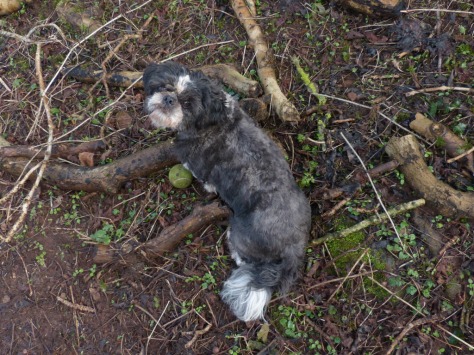 All of this mud is your fault. There is mud everywhere.
All of this mud is your fault. There is mud everywhere.
 I don’t feel any compulsion to be fair, I just want to photograph beautiful things.
I don’t feel any compulsion to be fair, I just want to photograph beautiful things.
My camera doesn’t work very well in the winter. One day I will catch these birds in the sunlight.
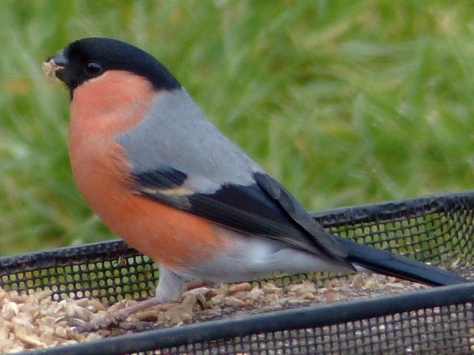 That is my pair of Bullfinches. They have been here for nearly two weeks now, surely they will stay and nest?
That is my pair of Bullfinches. They have been here for nearly two weeks now, surely they will stay and nest?
We had new species arrive last year that we had never had before, particularly the Goldfinches, because I changed the feeding a bit. There is no reason why we can’t add a few more species this year.
I am a bit worried that they will go when the buds start to appear.
This one is new for this year too.
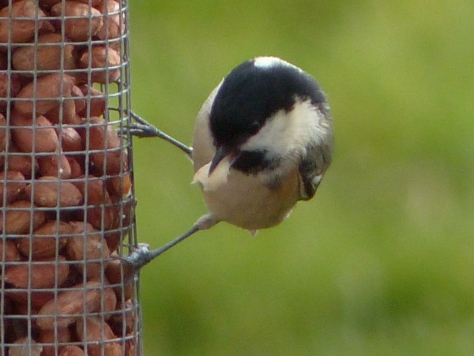 It’s a little Coal Tit. We didn’t have them last year but there are lots of them about just now.
It’s a little Coal Tit. We didn’t have them last year but there are lots of them about just now.
This next one is proof positive that I can’t take pictures in the dark but I have to record this. It is a Zombie Robin.
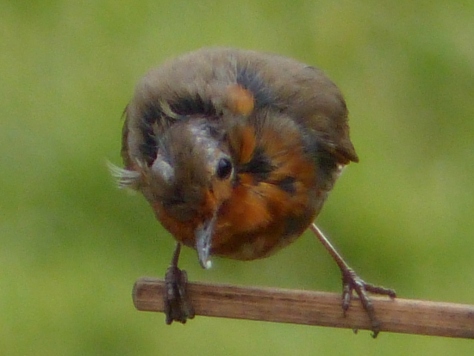 It seems strange to me that the birds are moulting now when we are at the start of the breeding season, you would expect them to be in their prime.
It seems strange to me that the birds are moulting now when we are at the start of the breeding season, you would expect them to be in their prime.
I missed some good pictures of a male Robin displaying to another male this morning. He had his head thrown right back and his chest all puffed out and he was bouncing toward the other bird before chasing it off. There are a lot of Robins about in our garden at the moment, far more than there should be. I have only seen four together at once but none of them were Zombies and I think that there are at least six around the back garden and possibly another pair in the yard around the side, including the one that I am taming.
Maybe they can live quite close together when there is a lot of food. They do scrap around the feeder but they only chase each other, I haven’t seen any serious fighting yet.
Anyway, as I can’t take photographs because of Fizz and all of the rain and mud…
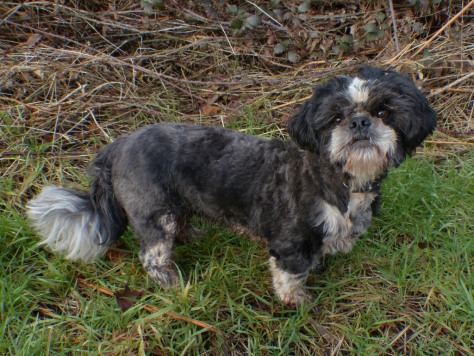 I have decided to give you something else to think about.
I have decided to give you something else to think about.
A couple of days ago my landlord asked me to have a look around his pond, something had been making holes.
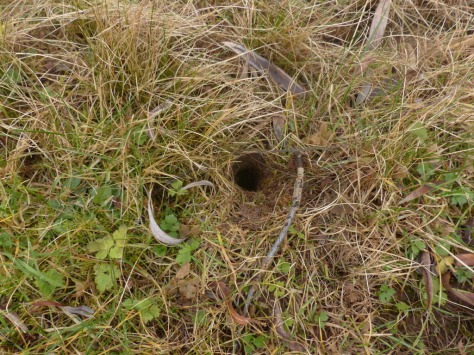 “What do you think that is,” he said.
“What do you think that is,” he said.
“That’s a broom handle, mate. Somebody’s been poking a broom handle in your grass.”
Well the holes are about one inch in diameter, pretty round and they go straight down.
He thought that they were being made by an animal and he wanted me and my nature detective dog to investigate.
I put the camera out and filmed it and it is indeed an animal and it is not big enough to wield a broom.
I don’t exactly know what it is yet and I thought you might know.
You will probably have to go full screen to have any chance of identifying it and even then the image isn’t very good but then I am not very familiar with these little animals. This video is slowed down to half speed, they are fast little animals.
I have a feeling that the holes might be a better indication of species and the video just confirmation.
All of the holes are around the edge of the pond. This is a garden pond and it has a liner so I am not expecting underwater entrances such as a Water Vole would make. There is a much larger natural pond just a few yards behind this one.
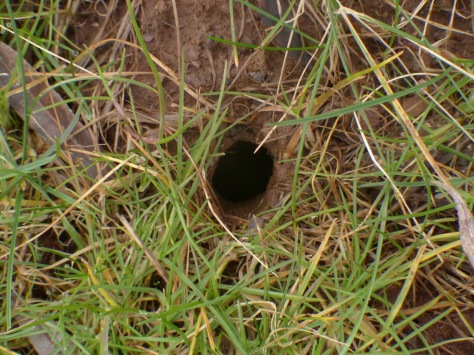 If I had to guess then I might say Bank Vole but I really don’t know much about that species. I have a feeling that the size of the hole might be indicative. They are pretty uniform holes and there are about a dozen that I can see.
If I had to guess then I might say Bank Vole but I really don’t know much about that species. I have a feeling that the size of the hole might be indicative. They are pretty uniform holes and there are about a dozen that I can see.
C’mon Mudface, let’s go and get muddy in the mud, mud, mud.
 If I had a goldfish then I wouldn’t have to wash my kitchen floor again tomorrow and there wouldn’t be branches of Gorse and worms all over my kitchen table.
If I had a goldfish then I wouldn’t have to wash my kitchen floor again tomorrow and there wouldn’t be branches of Gorse and worms all over my kitchen table.
Ulex europaeus, The Common Gorse
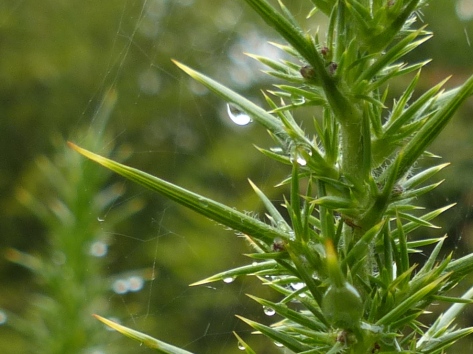 Also known as Furze or Whin, Common Gorse is a spiky shrub of the Pea family, It bears bright yellow flowers.
Also known as Furze or Whin, Common Gorse is a spiky shrub of the Pea family, It bears bright yellow flowers.
The structure of a Pea flower:
Like other members of the Pea Family the calyx of Ulex europaeus is made up of five sepals but these are fused together.
 When the calyx opens it splits into two halves, a top lip and a bottom lip, giving the appearance of just two sepals.
When the calyx opens it splits into two halves, a top lip and a bottom lip, giving the appearance of just two sepals.
 The flower has five yellow petals and the petals have names.
The flower has five yellow petals and the petals have names.
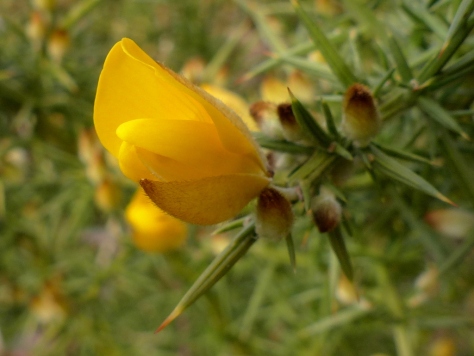 The top petal is called the “Banner” or “Standard” petal. The two petals that form a boat like shape, bottom, centre are called the “Keel” petals and these house the stamens and style. Either side of the keel petals are the “Wing” petals.
The top petal is called the “Banner” or “Standard” petal. The two petals that form a boat like shape, bottom, centre are called the “Keel” petals and these house the stamens and style. Either side of the keel petals are the “Wing” petals.
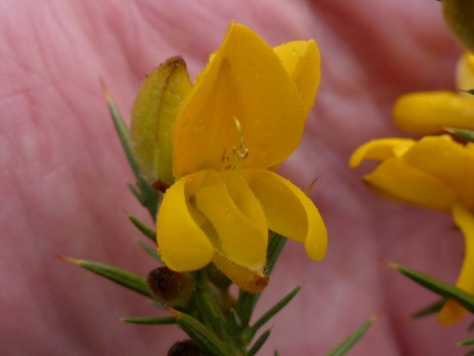 The reproductive parts of the flower are initially hidden within the keel petals and it requires the weight of a large insect, such as a bee to land on the keel and expose the stamens and style, when this happens a small cloud of pollen bursts from the flower.
The reproductive parts of the flower are initially hidden within the keel petals and it requires the weight of a large insect, such as a bee to land on the keel and expose the stamens and style, when this happens a small cloud of pollen bursts from the flower.
Inside the keel there are ten, partially fused stamens and a central style.
(Gorse flower, petals removed)
 The seed pods of Common Gorse are quite small and they develop within the brown remains of the petals. Each pod contains two or three seeds that are relatively heavy and fall close to the parent plant.
The seed pods of Common Gorse are quite small and they develop within the brown remains of the petals. Each pod contains two or three seeds that are relatively heavy and fall close to the parent plant.
 The spines on the Gorse are modified leaves.
The spines on the Gorse are modified leaves.
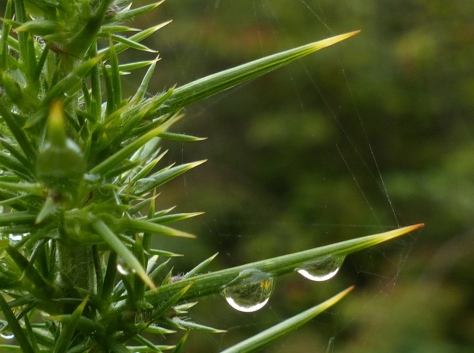 The spines have been developed to protect the plant from being eaten but a lot of other species have learned to take advantage of the protection offered.
The spines have been developed to protect the plant from being eaten but a lot of other species have learned to take advantage of the protection offered.
 Adders, Grass Snakes and lizards all take advantage of the cover of Gorse as do many small mammals. The dense spiny growth also makes an ideal nesting site for many birds but it does not just offer protection from predators. Gorse is evergreen and in the winter months it offers valuable protection from the elements.
Adders, Grass Snakes and lizards all take advantage of the cover of Gorse as do many small mammals. The dense spiny growth also makes an ideal nesting site for many birds but it does not just offer protection from predators. Gorse is evergreen and in the winter months it offers valuable protection from the elements.
The Dartford Warbler, an insect eating bird that does not migrate, could not survive our winters without Gorse for shelter, it is dependent on the plant.
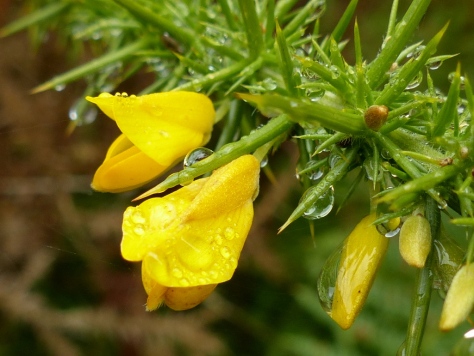 Gorse flowers produce a lot of pollen and so they are a valuable food source for bees.
Gorse flowers produce a lot of pollen and so they are a valuable food source for bees.
When it comes to nectar the scientists can not agree on this one, some very reputable sources say that Gorse does produce nectar and many others say that it does not. My take on this could be that it obviously doesn’t produce nectar in any significant quantity or there would be no dispute.
However, it is worth remembering that until 2013 Wood Anemones didn’t produce nectar and then they found the nectaries. See my post on Wood Anemones for more on that one. Science just doesn’t know everything about everything.
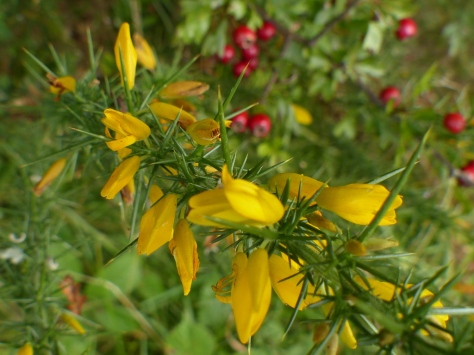 There are a number of moths and other invertebrates that also rely on Gorse. One example is the Gorse Case-bearer Moth (Coleophora albicosta) which overwinters in a silk cocoon inside a Gorse flower, the larva emerges and eats the seeds of the flower and then lives inside a case made from the sepals of the flower.
There are a number of moths and other invertebrates that also rely on Gorse. One example is the Gorse Case-bearer Moth (Coleophora albicosta) which overwinters in a silk cocoon inside a Gorse flower, the larva emerges and eats the seeds of the flower and then lives inside a case made from the sepals of the flower.
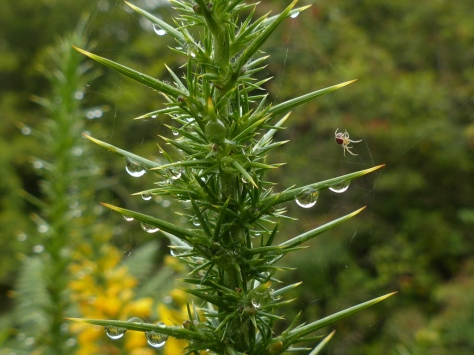 It is not just wildlife that benefits from Gorse, it has been a valuable crop to us as well.
It is not just wildlife that benefits from Gorse, it has been a valuable crop to us as well.
The soft, coconut fragrant flowers are edible and have been used as decoration and flavouring but it is the tough spiky foliage that we really prize. It is very nutritious and available all year round and has been grown as animal fodder, particularly for horses. They can’t eat it as it is, it has to be milled and there were Gorse mills built for this purpose.
Gorse was also grown as a fuel. The woody stems burn with a lot of heat and produce little ash.
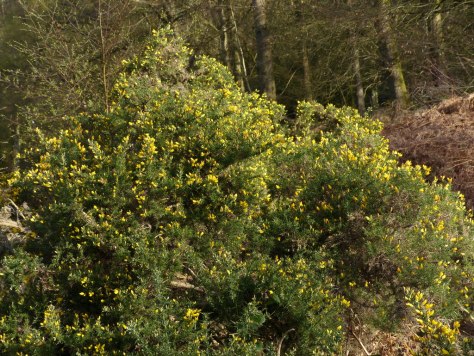 There are three species of Gorse native to the UK. The other two are Western Gorse (Ulex gallii) and Dwarf Furze (Ulex minor).
There are three species of Gorse native to the UK. The other two are Western Gorse (Ulex gallii) and Dwarf Furze (Ulex minor).
Common Gorse grows to two to three metres and it’s main flowering period is from January until July (Although it can be found in flower at any time of year)
Dwarf Furze as it’s name suggests is a small plant growing to about thirty centimetres (12 inches) and flowering from July until September.
Western Gorse is also quite small, not making more than about forty centimetres (16 inches) and again flowering from July till September.
Common Gorse has small bracts growing at the base of the flower, between two-four mm long. They do exist on Western Gorse but less than one mm long so if they are noticeable it is almost certainly Common Gorse. Although often these bracts remain attached to the calyx and are not so evident.
Kingdom: Plantae
Order: Fabales
Family: Fabaceae
Genus: Ulex
Species: Ulex europaeus

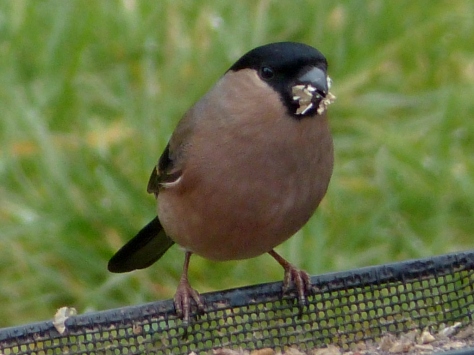
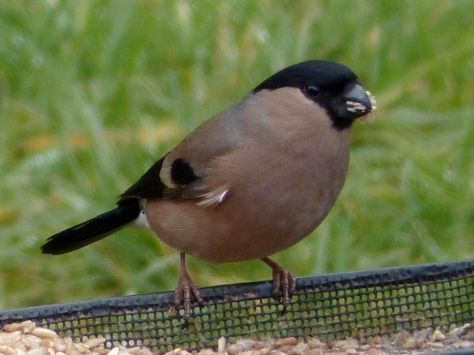
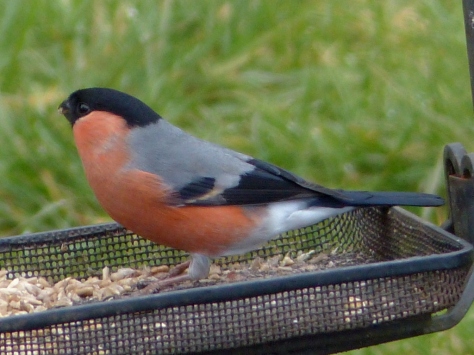
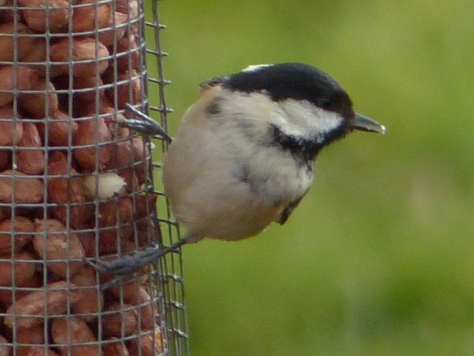


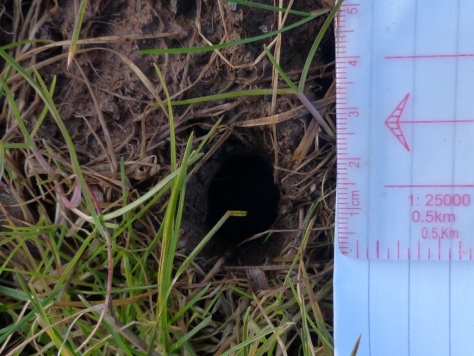
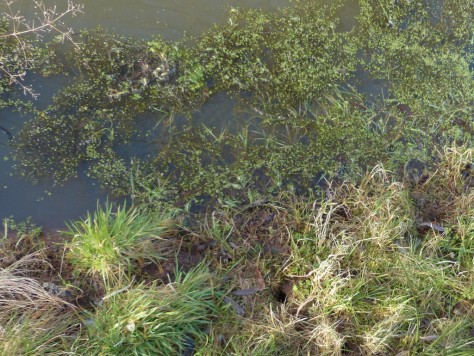
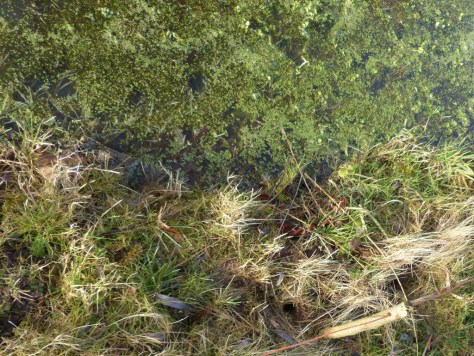
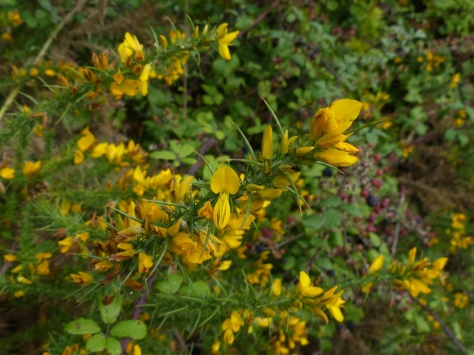
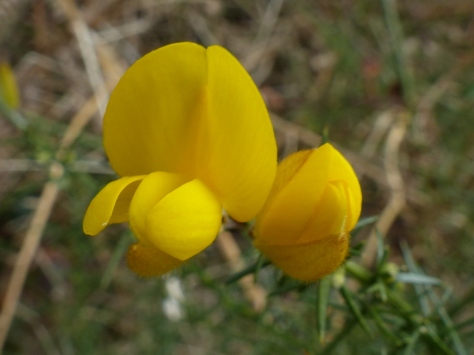

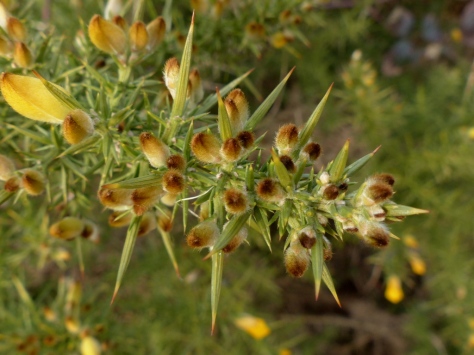
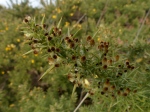

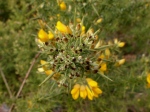
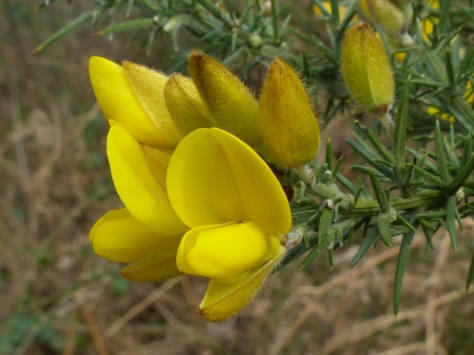
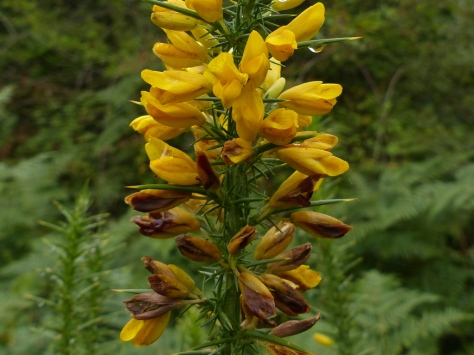
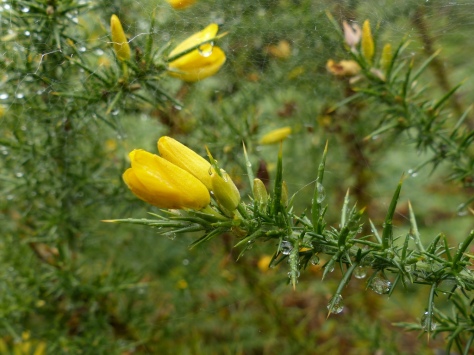
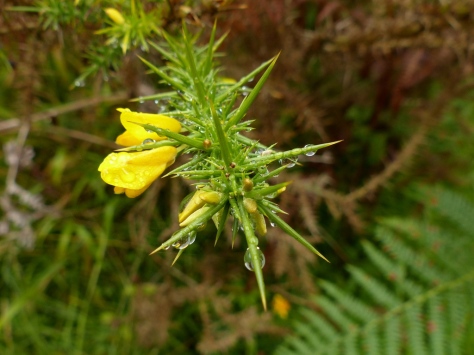
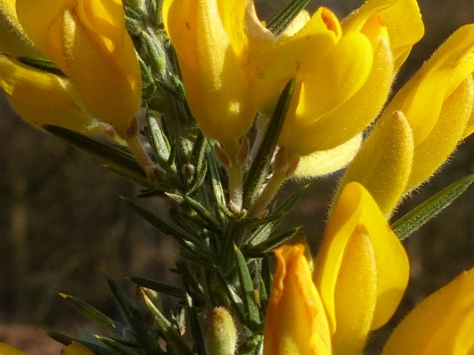

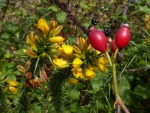
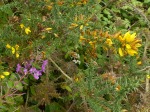

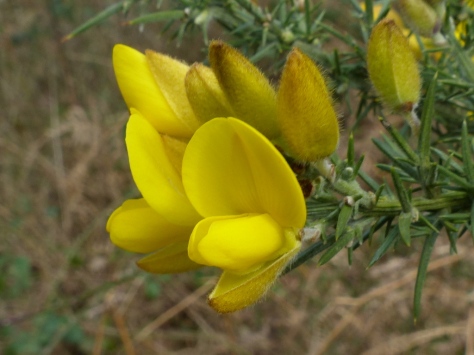
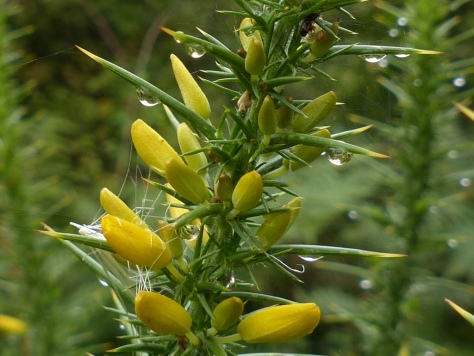
A mystery….but you’ll figure it out. The bullfinches are beautiful, in any light.
LikeLiked by 1 person
Thank you Sarasin 🙂 The Bullfinches are lovely and I so want them to become a feature here. They are a brilliant splash of colour in the garden 🙂
LikeLiked by 1 person
I hope they will nest there so you can keep seeing them.
LikeLiked by 1 person
Its a Mallard, Colin. Dressed up as a Bank Vole. There are a few in the background that haven’t put their costumes on yet.
I visited my potential new estate today and continue to be delighted by the birdlife. I suspect voles will be around too. Goldcrests were common today and I was almost mugged by a gang of rampaging robins. Your worms or your wife? they demanded. Easy choice.
LikeLiked by 2 people
Thank you Andrew 🙂 I have a feeling that you are going to enjoy your garden. I haven’t seen a Goldcrest for months, they do sometimes turn up here but they don’t stay. I will have to look into what it is they want and see if I can tempt a couple.
LikeLike
The flowers are a lovely color. I am happy you have the Bullfinches. I saved a photo of one from a previous Blog and use it for desktop background.
I believe the little “beast” is a vole. What type is beyond me, but it does look like a vole. We have something similar that is a mole, also. Hope you learn its identity.
I think Fizz looks grand with her Spring “do.” And, from her poses I think she already knows it. Love her a bunch.
LikeLiked by 1 person
Thank you Ettel 🙂 I am pretty sure that the little beast is a vole. We only have three types here and it is not a Water Vole, that leaves us Field or Bank Vole but I am not familiar enough with either species to say which it is. Never mind, this is how we learn. I think that I need better pictures 🙂 Fizz sends her love.
LikeLike
Rat? They are everywhere… I saw one in Birdcage Walk in London last summer, even the queen has to live with them as neighbours
LikeLiked by 1 person
Thank you Heather 🙂 No it is not a Rat. We are not plagued with them but we do see the odd Rat around the farm. They have big ears and pointy noses and a long, naked tail. Also a Rat burrow is 6-8 cm across and you could put your hand down a Rat hole.
Close your eyes now if you don’t like Rats 🙂
LikeLiked by 1 person
The voles have noticeable tails (0.29 secs or thereabouts – the vole on the left of screen) so most likely a bank vole rather than a field vole but very hard to say. I was surprised to see them burrowing so close to water.
The Gorse is so beautifully photographed and documented. I had never noticed how lovely the buds were before. Thank-you Colin.
LikeLiked by 1 person
Thank you Clare 🙂 Yes I saw the tail and quite large ears made me think Bank Vole but I think that I need better video for this one. My trail cam has an HD option that I don’t normally use but probably need now. I will see how I get on with that.
I started off writing about the Gorse thinking there is not much that you can say about this one and I ended up leaving a lot out. That so often seems to be the way and as always we do need to look closely to see how beautiful and clever the things around us are.
LikeLiked by 1 person
Will look forward to seeing more volery! I absolutely agree with your last sentence!
LikeLiked by 1 person
Fascinating as ever. They weren’t rats – tails all wrong. Gorse is considered a weed over here but I love the smell of the gorse flowers in the heat of the summer. Also it makes a wonderful nurse crop for regenerating native bush…
LikeLiked by 1 person
Thanks Maureen 🙂 Yes Gorse seems to be another of those plants, innocently imported for it’s benefits without realising how much it would like the climate. At least you can see some of it’s good points. I expect a few of your native species have learned to enjoy the cover and protection it offers too.
LikeLiked by 1 person
I know those guys. The one on the left is Vlad, and the one on the right is Smitty. Or, that could be reversed; they sort of look alike. Hope that helps.
LikeLiked by 1 person
Thank you Emilio 🙂 Of course it helps to know how to address them. Many thanks.
LikeLike
Gorse is pretty, but the prickles look like they might hurt! I loved learning about it because I’ve read of it, but we don’t have it here that I know of.
Cute little voles, do their holes pose a hazard to the sheep? Voles here can grow to 6″ and create a heap of damage every winter, stripping bark & girdling stems beneath the snow. It can be quite a shock when the snow melts and we see what they have wrought.
LikeLiked by 1 person
Thank you Eliza 🙂 The prickles do hurt. They are very hard and sharp and there are so many of them, you can’t go near a Gorse bush. It makes Brambles “barbed wire” seem friendly. Good protection for little animals though.
I never see the Vole burrows out in the pasture, I don’t think that they like the short cropped grass, there is nowhere to hide from the Owls.
LikeLike
Another wonderful post. The birds are so beautiful, as are the flowers. I would love to see a picture of a Bank vole 🙂 And more sheep, please:) Love the sheep. Hugs to Fizz and thank you.
LikeLiked by 1 person
Thank you Gigi 🙂 Some of the Sheep are really keen to have their pictures taken. I will see what we can do. Sadly we have no Lambs due this year, we had six last year. Lambs are nice 🙂
LikeLike
I think you’ve taken beautiful photos despite the wet, cloudy, muddy day. The bullfinches are lovely so I hope they do stay and nest for you. I rarely see birds of that particular shade of orange here. Muddy dogs are not much fun to clean up but goldfish are far less entertaining than Fizz, I’m sure and would probably take a long time to train to fetch a ball. 🙂 I hope you get some sunshine again soon.
LikeLiked by 1 person
Thank you Jane 🙂 Sunshine and nicer weather are pretty much guaranteed now. February has been the worst month of our winter but that doesn’t really matter because March brings Spring and Winter has had her time 🙂
LikeLike
A load of bull finch I would say 😉 A Diva Dog is more golden than a fish anyday. And zombies, worms, Vol-e-vision and Gorse. I would love to make more rhymes but it would take all day of course :p
LikeLiked by 1 person
Thank you Stephanie 🙂 A gold medal for Fizz then, champion ball fetcher and mud splasher. Really she is looking forward to the spring just as much as I am.
LikeLiked by 1 person
fascinating insight into the life of “Broomandle Scurrious”.
LikeLiked by 1 person
Thank you Stephen 🙂 I plan on learning more about these little animals, they are very interesting. On my first night of filming I had a very brief glimpse of a Barn Owl and thought, why is a Barn Owl on the ground by our pond? Very interesting.
LikeLike
I love your journal. It’s actually really nice reading/looking at an appreciative post about Gorse. Over here (Australia), Gorse can be a serious environmental weed in cooler areas. I once spent 12 months doing ecological restoration in the Blue Mountains and Gorse was one of our more problematic weeds in the montane heath areas.
LikeLiked by 1 person
1. Love the bull finches. 2 we don’t have voles but it likes like it to me, 3 Spanish Gorse is a huge problem here and needs serious destruction.
LikeLiked by 1 person
Thank you John 🙂 Good luck with the Gorse my friend, it was born for your country. The spines are adapted to lose the least water and it is known as a fire-climax plant. It burns easily and regrows from the roots, fire helps the seeds to germinate. It is a tough cookie well suited to your way of life. I suggest that you build a Gorse mill and harvest it.
LikeLike
Lovely post again. I think that it is probably a bank vole but I am no expert. I think bank voles are the creatures that make those holes you occasionally see in the middle of a path, and they seem to go straight down. Or you could just classify it as “rodent”!
LikeLiked by 1 person
We see holes similar to this in the field, when the snow melts, not sure if this is because the grass is more flattened., Field voles?
LikeLiked by 1 person
I agree with you; I think they are bank voles. Beautiful creatures. We had one in our yard. Sadly he died, but he was so cute.
LikeLiked by 1 person
Thank you Dorne 🙂 We seem to have quite a few in our yard. The Barn Owl is not doing his job properly 🙂
LikeLike
I have to say something. You post pictures of flowers all the time while I am in bed and yesterday I was soooo frustrated to not be able to see those wonderful flowers, that I took all my strength and left for a tiny little walk in the nature (which is more or less just a round around the farm but anyways). I found absolutely nothing colorful, nothing! Not even one single flower. This is frustrating! I’m jealous!!!
LikeLike
Thank you Becky 🙂 Fizz sends her love.
Pick out a pleasant outlook,
Stick out that noble chin.
Wipe off that full of doubt look,
Slap on a happy grin.
And spread sunshine all over the place,
Just put on a happy face.
You’ve got a little something on your lens…
😀 😀
LikeLiked by 2 people
Fizz and Robin Hood ❤️ I have to admit that Fizz is cuter but tell Robin to not take it too personal, I know Fizz for too long now 😊
LikeLiked by 1 person
You are too fast. Now refresh 😀
LikeLike
Rag, Tag and Bobtail?
LikeLike
Two thoughts on this post: 1) when I looked at that video full-screen, it felt like I was actually there (I have a pretty big screen on my desktop!)–very magical location, not to mention, lovely ducks which leads me to 2) you know, ducks are quite capable of making a hole like that. I get plenty in my backyard in summer, so I know. 😉
LikeLike
I think the artist’s eye *and* his camera work very well in the winter. 🙂
LikeLike
Thanks for the lovely shots of your backyard birds! Bring on more!!!
Elouise
LikeLike
All fantastic to see!
LikeLike
Lovely photos! I have never had a bullfinch in our garden, but we often see coal tits. I’m guessing the mysterious animals are bank voles – I once saw some on the banks of the Trent near Forest’s ground about fifteen years ago…never seen them since!
LikeLike